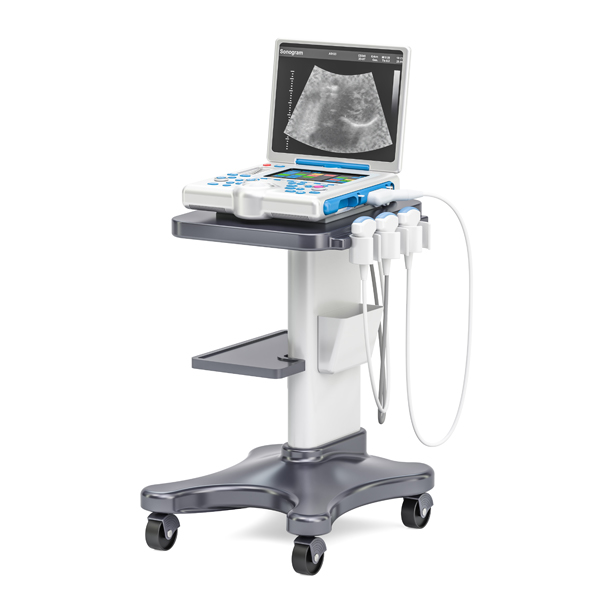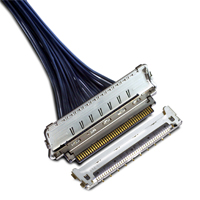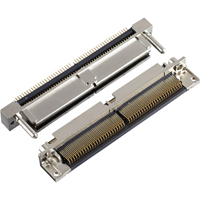Cable Connectors for Ultrasound Probe Assemblies
Medical electronics are demanding applications for cable connectors. These connectors and cables need to resist liquids, impacts, repeated mating cycles, cleaning, and EMI — and that’s all in addition to providing reliable connectivity and high signal integrity. Users also expect medical devices to continue to function in a reliable fashion, day in and day out, so these connectors and cables must be durable enough to withstand daily use in demanding environments without damage or degradation, often for long product lifecycles with thousands of mating cycles. In addition, lengthy regulatory approval cycles, coupled with these long product lifecycles, require component suppliers to keep their product available for many years. So, connector suppliers and product lines with well-established histories, proven success in the medical electronics industry, and a variety of solutions capable of satisfying application demands ranging from high mating cycles to moisture resistance are invaluable when selecting cable connectors for medical device designs.

One common application for medical connectors and cables is ultrasound equipment. Ultrasound probe cable assemblies typically use fine-gauge micro-coaxial cable ranging from 42–36AWG to reduce equipment weight and size and support cable flexibility. These impedance-controlled micro-coaxial wires transmit signals to and from the emitter/sensor on the ultrasound probe, so their signal lines are shielded to prevent EMI and crosstalk and ensure the generation of clean images. A single ultrasound probe assembly can have up to 192 or more individual coaxial wires, so managing these many wires is a significant design issue as well.
Solutions include direct termination of the cable to paddle cards and then board-to-board connectors or direct termination to other connector types. Paddle cards are small PCBs designed for direct wire termination, but often have a board-to-board connector on the other side of the card, allowing the paddle card to make the connection between the wires and the connector. Other connector types can terminate the wires directly, without the PCB paddle card. Micro-coaxial cable connectors, for instance, have a modular construction that not only supports direct termination, but also allows the probe assemblies to be made in pieces and then assembled, which — in the case of rework or repair — can significantly minimize production slowdowns and help manage overall costs.
Internal connectors can include multiple low-pin-count connectors, but a high-pin-count connector is required for the plug end of high-signal-count ultrasound probe assemblies. The challenge that typically accompanies high-pin-count connectors is increased insertion force. In medical settings, personnel need to be able to quickly and easily exchange one probe assembly for another, depending on the imaging task they’re performing. So, high-pin-count connectors especially designed to require lower insertion force can make these systems much easier to use and reconfigure.
 CABLINE®-CA II Micro-coaxial Wire-to-board Connectors have a miniature 0.4 mm pitch, a low 1 mm (±0.1 mm) mated height, 360° shielding, a multi-point ground design, and a secure locking cover, and deliver 20 Gb/s per lane with high signal integrity, which makes them ideal solutions for high-data-rate application including ultrasound probe assemblies.
CABLINE®-CA II Micro-coaxial Wire-to-board Connectors have a miniature 0.4 mm pitch, a low 1 mm (±0.1 mm) mated height, 360° shielding, a multi-point ground design, and a secure locking cover, and deliver 20 Gb/s per lane with high signal integrity, which makes them ideal solutions for high-data-rate application including ultrasound probe assemblies.
Ultrasound sensors are typically made with piezoelectric crystals mounted to flex circuits. The signals transmitted to and from the crystal travel through the flexible circuit to the micro-coaxial cable. Small micro-coaxial connectors are often used to ease the construction of the flex assembly and then separate the construction of the micro-coaxial cable assembly, bringing the two parts together at the final assembly. The opposite plug end can be handled similarly, with cable termination connectors, a PCB, and another connector for the plug interface. Alternately, the cable can be directly bonded to the PCB, where the mating connector is also soldered. This assembly can then be overmolded and equipped with latching hardware for enhanced security.
 MINIDOCK® Series Connectors are optimized for use in rugged docking applications and ruggedized applications with low-insertion-force cable plug terminations, like the cable plug mating end in ultrasound probe assemblies. They have rugged die-cast bodies with generous lead-in, integrated guidance hardware, and optional sealing against moisture intrusion and support up to 20,000 mating cycles.
MINIDOCK® Series Connectors are optimized for use in rugged docking applications and ruggedized applications with low-insertion-force cable plug terminations, like the cable plug mating end in ultrasound probe assemblies. They have rugged die-cast bodies with generous lead-in, integrated guidance hardware, and optional sealing against moisture intrusion and support up to 20,000 mating cycles.
Ultrasound equipment designers have several suitable connector options available to them, but the performance requirements are absolute. Ruggedness, ease of use, reliability, good signal integrity, and high mating cycles are critical. After that, it is a matter of optimizing selections to best suit individual application demands and balancing product performance with manufacturability.
